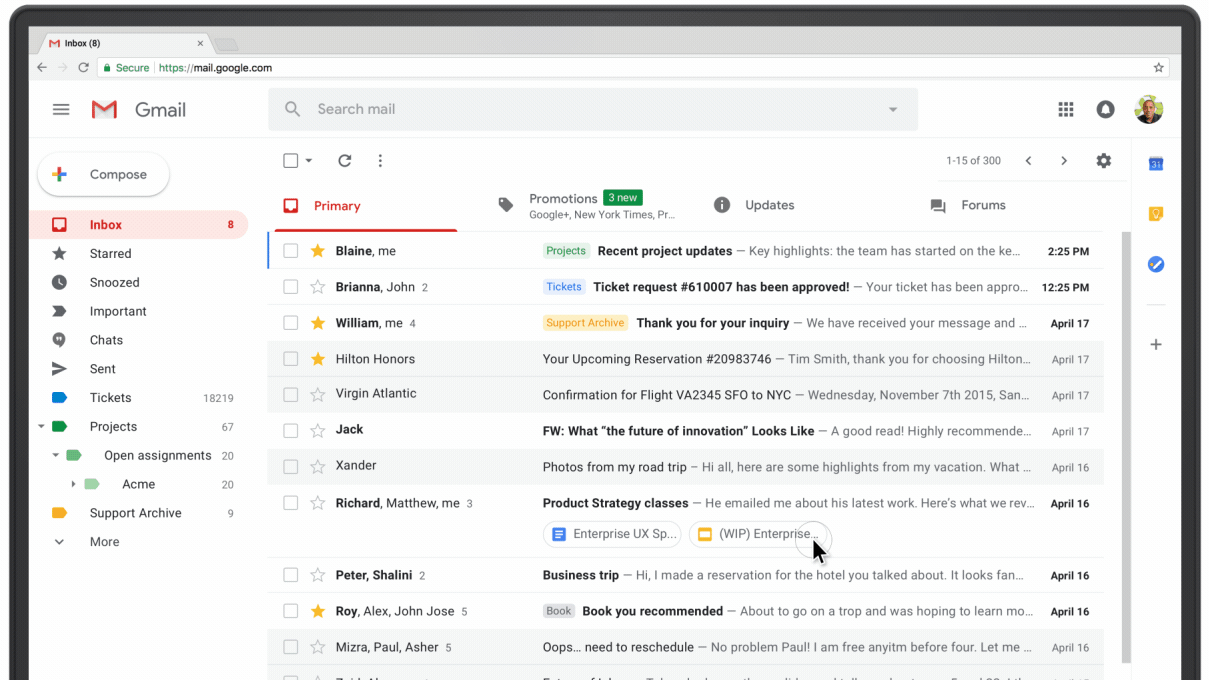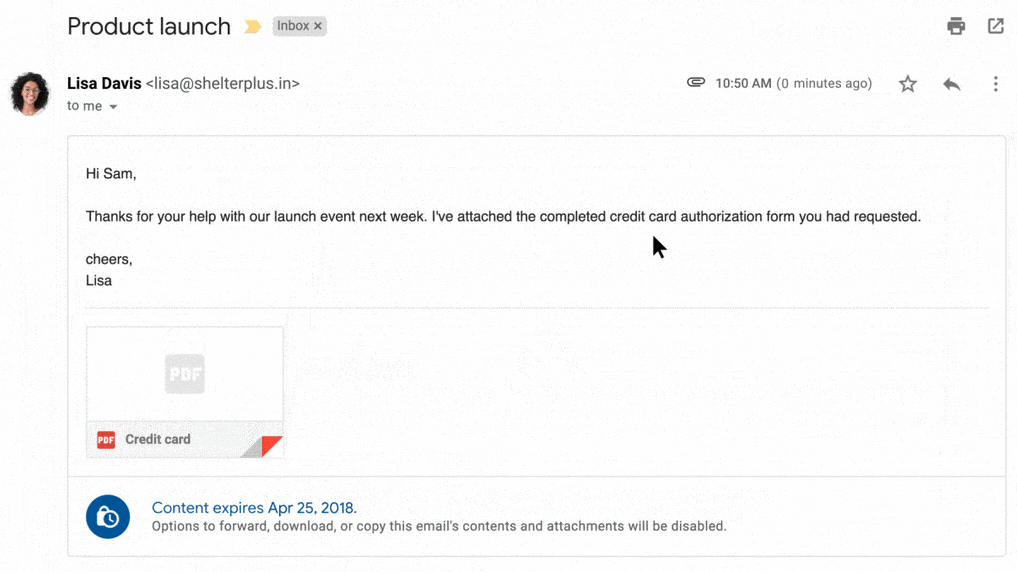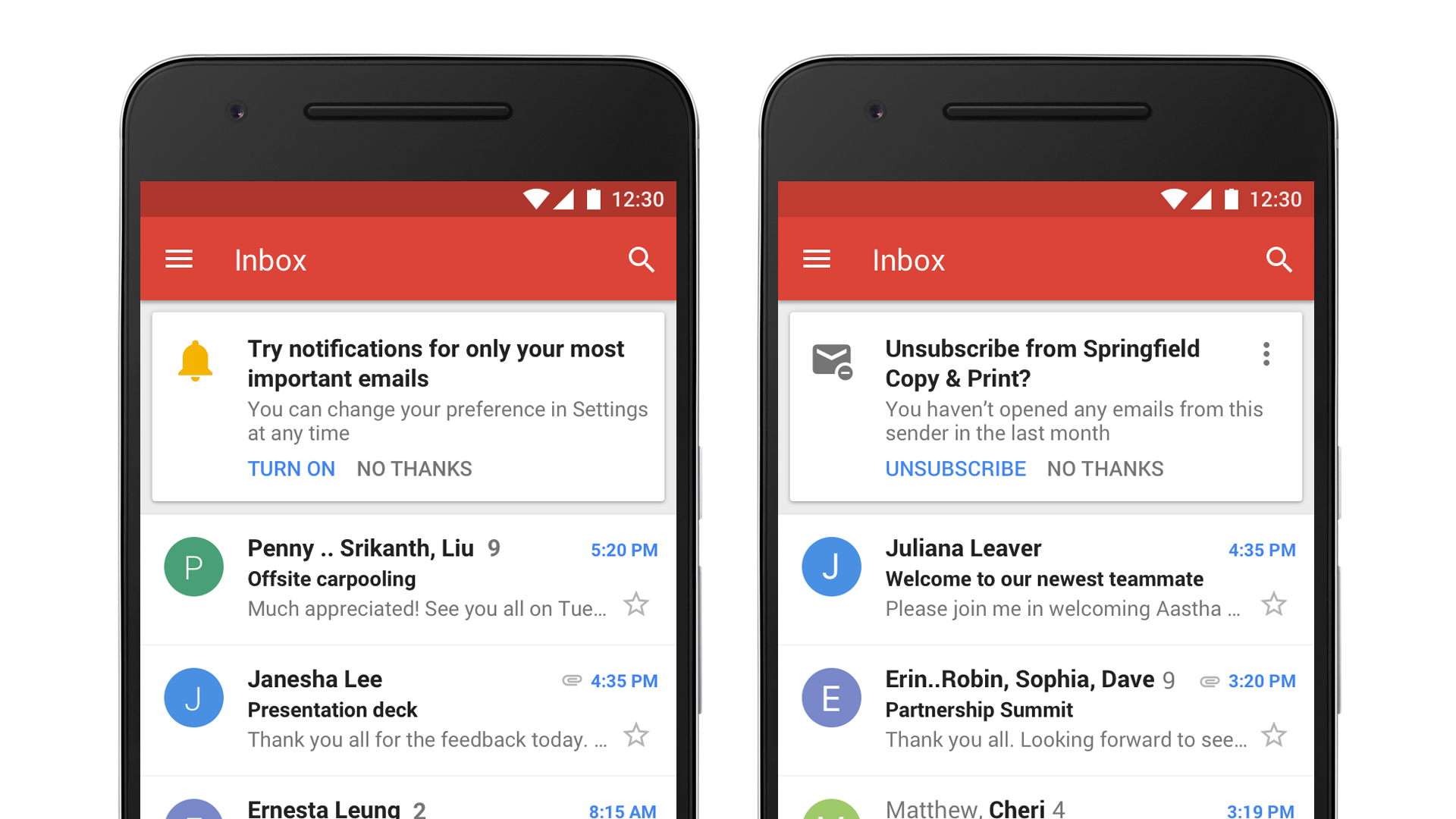
The new Gmail for web is here, and it's designed to take the stress out of managing email overload. It's a ground-up rewrite with an eye towards making it safer and more productive for workers – not just businesses who pay for it, but also for everyone who uses the free version to manage their work.
One of the biggest changes to Gmail is a new Confidential mode, which is designed to make Gmail more secure and prevent loss of sensitive information through hijacking of accounts.
Confidential mode
Until now, the permanence of email has been problem; once you've sent a message to someone, it's in their inbox forever unless they decide to delete it. Confidential mode will send a link to the content, rather than the content itself.

As the sender, the content will remain in your inbox, securely encrypted, and you can revoke access at any time. Alternatively, you can set the link to expire after a certain period. You can send a confidential email to anyone – not just people who use Gmail – and enable two-factor authentication to make sure only the intended recipient can open the link.
Confidential mode will also prevent accidental or semi-malicious leaks by disabling the ability to copy text and save pages, working on the basis that if committing a crime is even slightly more difficult, people are much less likely to do it.
Anti-phishing
There's also added protection against phishing. Gmail made a name for itself as the email provider with the best spam filter, but although it represents a far smaller proportion of nuisance emails, phishing is a far bigger threat.

Gmail uses machine learning to help identify threats, and now flags them up much more clearly. Previously, potential phishing emails were identified with a small bar warning readers that they should be careful clicking any links. Now, the interface will present a huge red warning, explaining the danger in plain language so people understand the risk.
Get daily insight, inspiration and deals in your inbox
Sign up for breaking news, reviews, opinion, top tech deals, and more.
Push and nudge
Google has also taken steps to relieve the email overload problem. It's introduced a feature called Nudging, which bumps potentially important messages back to the top of your inbox after a few days as a reminder to deal with them. Not many messages are bumped, but during in-house tests, Google employees have found them helpful.

Push notifications have also have a revamp. At the moment, most people who use the Gmail mobile app get a push notification every time they receive a message, which can be a huge distraction. Now there's a high priority option, which only alerts you when an important email arrives.
It does this using the same technology as Smart Reply, which was introduced last year and suggests automatic responses to emails to save you typing them out. Google doesn't scan your emails to target ads, and its employees never read the content of your messages.
Gmail also includes new features that can avoid the need to open some emails at all, including one-click unsubscribe for mailing lists whose messages you don't usually read.

There are also new attachment chips – small icons that appear below email subject lines in your inbox and let you download email attachments without opening the whole email chain. There are also options to archive, delete or snooze messages with a single click.
Easy app access
Perhaps most noticeable new feature is the new collapsible Side Panel, which makes other Google apps like your calendar and notes accessible without switching between tabs.

These are enormously helpful, enabling you to drag emails straight into other apps, and manage your appointments without leaving your inbox.
You can opt into the new Gmail today, and it will become an opt-out change in the coming months. Eventually it will become mandatory for all Gmail users.
- Using a different email provider? Check out our guide to free email clients

Cat is TechRadar's Homes Editor specializing in kitchen appliances and smart home technology. She's been a tech journalist for 15 years, having worked on print magazines including PC Plus and PC Format, and is a Speciality Coffee Association (SCA) certified barista. Whether you want to invest in some smart lights or pick up a new espresso machine, she's the right person to help.